The Complete Squat Guide
Everything you need to know about squats. Squats are easily one of the most functional movements out there. We squat to sit down, to pick up objects from the



Everything you need to know about squats. Squats are easily one of the most functional movements out there. We squat to sit down, to pick up objects from the


Squats are easily one of the most functional movements out there.
We squat to sit down, to pick up objects from the ground, and in many cultures, it's typical to rest or eat in a low squat position.
The fact that it's so essential is reason enough to learn a bit more about the exercise, but even more so if you’re an athlete looking to get better at your sport.
In this guide you'll learn:
The squat is a knee dominant strength exercise in which the athlete flexes their knees and hips to lower themselves down before returning to a standing position. There are many ways to modify or adapt the squat (some of which we will see below), which may contribute to why it is a considered a key exercise among the fitness community.
Squats are widely known for their boosting effects on health, fitness, and longevity.
CrossFit aside, chances are that if you have followed any type of fitness program, they have included some form of this exercise.
Strong legs equate to improved athletic performance, so it's no wonder why squats are so popular.
Squats are also great for developing:
When performing a standard squat, your quadriceps, adductor, glutes, and hip flexors work to move the load as your hamstrings and core work as stabilizers. When we add a barbell to the equation (like when performing front squats or back squats) there can be a bigger implication for your abs and back muscles as they support the weight of the bar.

Because it is so essential to everyday life, the correct way to squat depends on its purpose.
Obviously, squatting down to use the bathroom or to pick something up doesn't require too much attention to form, but once you have 30, 50, or 100 plus kilos on your back, technique becomes important.
Before we look at some points that will help us squat with external loads, let's look at the points of performance for body weight squats, also known as the air squat:
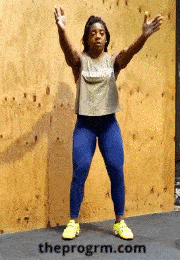
Details about this exercise can differ between sports and methodologies.
In CrossFit, a “legal” repetition is when the athlete descends so that their hip crease passes below their knees.
While that may seem simple, hip and ankle mobility can make this rule difficult to abide by.
Work within your limits as you work towards achieving the standard.
There are a lot of different variations for the squat depending on your fitness goals, but let's begin by looking at three basic moves. Although these exercises are performed using only your bodyweight, they can be modified and performed with free weights:
Bodyweight Variations
Test your aerobic capacity by including squat jumps in your training.

This one-legged variation can be used to improve your hip mobility while also providing a deep stretch for the hamstrings and adductors.
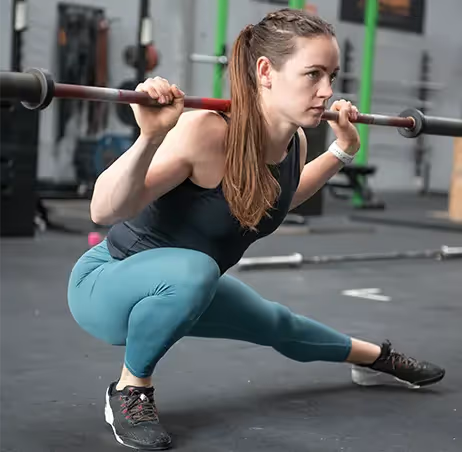

Commonly known as pistols, this advanced variation will test your strength, stamina, balance, and flexibility.

Barbell Variations
Now that we’ve practiced and perfected the movement using body weight, let's look at some squats performed with a barbell.
These variations have an added element of difficulty because the athlete must be able to support the external weight while maintaining proper technique and positioning.
Balance, control, and structural integrity are crucial for keeping the bar supported and the athlete safe.
These variations can also be performed with kettlebells, dumbbells, or plates in lieu of a barbell.
This exercise is one of the “big three” exercises (alongside bench press and deadlift) that are the gold standard for hypertrophy and athletic ability.
Powerlifters, Olympic weightlifters, sprinters, and CrossFit athletes champion this lift for developing strength, muscle mass, and explosiveness.
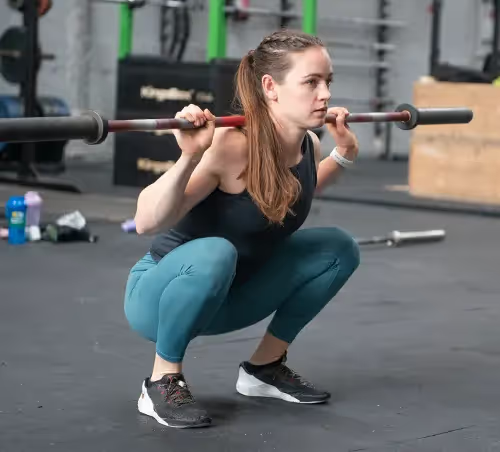
Being that it is a compound exercise, barbell squats develop many muscle groups at once meaning that they can be very taxing.
This would explain why athletes that squat big numbers wear their PRs like a badge of honor, thus answering the eternal question: “Do you even lift bro?”.
Here’s how to do it:
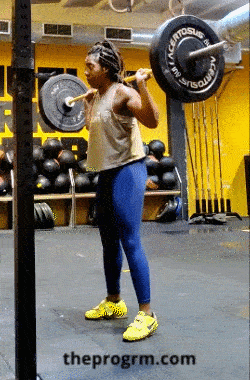
Keep in mind that there's more than one way to squat.
Playing with your stance, and bar placement (high bar, as described above vs. low bar, squatting with the bar on your posterior delts) are some other ways to perform this powerhouse exercise.
Like the back squat, front squats are also a knee-dominant dominant exercise except the weight is supported in front of the athlete equating to a more upright torso and bigger gains for your quads and core.

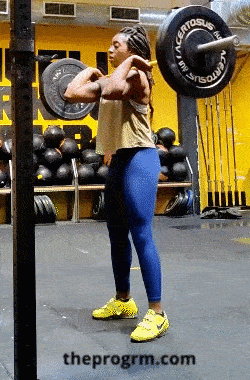
A true test of balance, mobility, and stability!
Overhead squats are one of the most technically demanding squat variations, with important carry-over to the Olympic lifts.

Before loading up a bar, be sure that you can perform this movement with a stick or PVC pipe without difficulty.

Look to improve your technique, not just your numbers. I’d take a good 90 kg squat with a solid bottom position and explosive drive over a barely-below-parallel 120 kg monstrosity any day! A good squat is a skill and to get better at a skill you need to practice. That doesn't mean you should try to max out every day, but rather get better at all aspects of the exercise.
For example, focus on building your hips upper back and midline or improving your ankle mobility.
Don't be afraid to make adjustments to your stance and tempo, and keep in mind your cues as you lift.
Improving your mobility, core stability, and incorporating accessories is usually all that's necessary to see your numbers go up, and your hips go down.
Being able to maintain the correct posture and alignment is important, especially when squatting with heavy loads. Lifting shoes can be very useful in that respect, and lifting belts can be great for offering extra midline support or reinforcing bracing. That said, you should not have to rely on aids to perform an exercise properly. Work towards correcting your imbalances and improving your sticking points so that your body can reap the most benefit from these exercises.
This issue is probably one of the most controversial involving squats.
For decades, we've heard that squatting deep will give you arthritis, tear your ACL, and because you’re the cartilage around your knees to wear away.
As a result, there are still generations of people who believe that squatting below parallel equals instant knee injury.
This myth is ridiculous as research shows that knees take the brunt of the work in when initiating the lowering phase rather than in the bottom position of the squat.
Does that mean we should avoid everyday tasks like sitting and getting up off of the couch?
Obviously not!
Deep squatting is a natural movement pattern (when was the last time you saw a baby that didn't have a perfect squat form?).
In fact, when compared to squatting at parallel, deep squats have been shown to activate more muscle groups. In the end it all comes down to form.
You should be able to perform an air squat with no problems before attempting to do it with load.
Your knees are meant to bend. So, the next time someone tells you not to squat deep, ask them how they get up from the toilet!
The pain experienced during or after squatting is usually attributed to poor posture or structural imbalances. Reduced mobility, hip or ankle instability, and/or weak glutes are common offenders.
When you know you have a heavy day ahead, warm up properly, engage your core and glutes, and increase weights gradually. Avoid bouncing or rebounding excessively in your squats as it can be hard to control the position.
Lastly, consider that like any type of exercise, training heavy very often without special attention to recovery is a recipe for injury.
How often you squat will depend on your goals and your training intensity.
In general, squatting 2-3 times per week is enough to see results.
You should also take into account how often you’re performing other knee dominant exercises like the Olympic lifts, thrusters, and wall balls.
Use different squat variations and stances to avoid developing muscle imbalances or overuse injuries.

If you’ve seen an athlete’s lumbar spine “tuck under” as they reach full depth in their squat, then you have witnessed this phenomenon.
Butt wink is when your pelvis rotates as you approach the bottom position of your squat.
Feeling to hold a neutral spine in the bottom of the squat can be genetic or may stem from mobility restrictions core stability issues.
In either case, excessive butt wink could result in a back injury, and so you should take steps to reduce it. Improving hamstring, hip and ankle mobility, core stability and flexibility, or make changes to squat stance or squat depth can limit this from happening.
Most people tend to deadlift more weight than a squat, although not by very much.
It's definitely possible for someone to squat more than they deadlift, however it can be difficult to compare the two lifts because of other variables.
The reasons could be attributed to your technique for each lift (maybe you’re just not as good at deadlifting) or being quad dominant.
The squat is a functional strength exercise that is important for athletes and general population alike.
Many sports make use of this exercise because it is so beneficial for your ability to move and load weight.
Given that there are so many variations available, the squat is as accessible as it is essential.
Performed properly, squats are an excellent way to keep your knees hips and back strong and healthy.